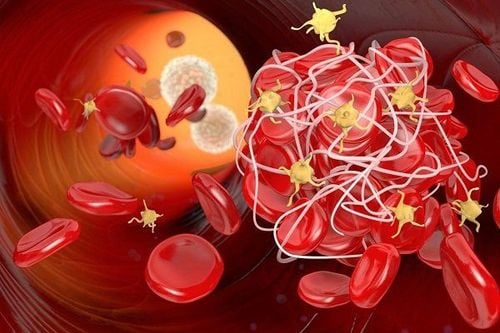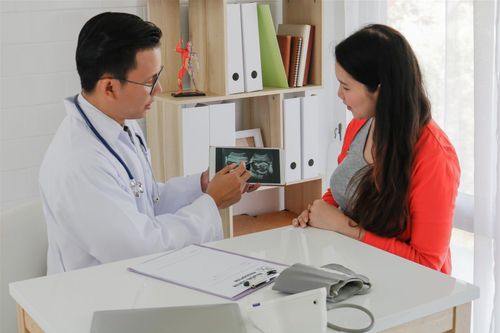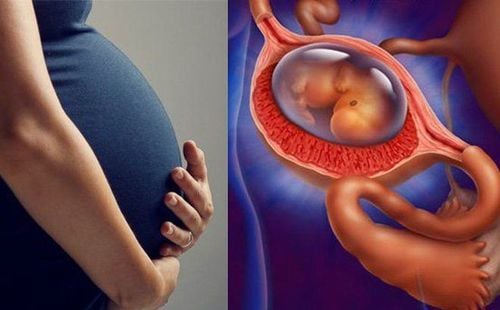This is an automatically translated article.
Having a vaginal birth or a cesarean section is always a difficult choice for many women without a special prescription from a doctor. Before choosing the right delivery method, pregnant women can refer to the 10 frequently asked questions below to have a comprehensive overview of the cesarean section.1. What is a cesarean section?
A cesarean section is the delivery of a baby through incisions made in the abdomen and uterus.2. Why is it necessary to have a cesarean section?
The following situations are some of the reasons why a woman should have a cesarean section:Contractions may not be enough to open the cervix for the baby to move into the vagina The umbilical cord may become pinched or twisted. or fetal monitoring detects an irregular heartbeat If a woman is pregnant with twins, a cesarean section may be necessary if the baby is born too early, is not in a good position in the uterus, or if there are problems other. The chance of a cesarean section increases with the number of babies a woman is carrying Problems with the placenta The baby is too large An infection in the mother, such as an immunodeficiency virus Mother has medical conditions, such as diabetes sugar or high blood pressure

Trong trường hợp em bé quá lớn, thai phụ nên cân nhắc sinh mổ
3. Is cesarean section necessary if the woman has had a previous cesarean section?
Women who have had a previous cesarean section can give birth naturally. The decision depends on the type of incision used in the previous cesarean, the number of previous cesarean deliveries. Pregnant women should consult an obstetrician or healthcare professional before making a choice.4. Can a pregnant woman request a cesarean section?
Some women may require a cesarean section even if a vaginal delivery is possible. This decision should be carefully considered and discussed with your doctor. The hospital stay for a cesarean section may be longer than for a vaginal birth. Also, the more cesarean sections a woman has, the higher her risk of certain medical problems and problems with future pregnancies. This may not be a good choice for women who want to have multiple children.5. What to prepare before cesarean section?
Before you have a cesarean section, you will need to prepare a few things:An intravenous line will be placed in a vein in your arm or hand to give medication during surgery. The pregnant woman's abdomen will be washed, and the pubic hair may be trimmed or trimmed. Pregnant women will be given medicine to prevent infection. A catheter is placed into the urethra to drain the bladder.
6. How will pregnant women be anesthetized during the cesarean section?
Pregnant women will be given general anesthesia, epidural or spinal anesthesia. With general anesthesia, pregnant women will not be awake during delivery. An epidural numbs the lower half of the body. Spinal anesthesia will also numb the lower half of the pregnant woman's body. During spinal anesthesia, drugs are injected directly into the spinal fluid.7. How is the cesarean section performed?
The doctor will make an incision through the skin and abdominal wall. Skin incisions can be horizontal or vertical. The muscles in a pregnant woman's abdomen are separated and may not need to be cut. Another incision will be made in the wall of the uterus by the doctor. Incisions in the uterine wall can also be horizontal or vertical. The fetus will be moved through the incisions, the umbilical cord will be cut, and then the placenta will be removed. The uterus will be closed with stitches.8. What are the complications of a cesarean?
Infections Blood loss Blood clots in the legs, pelvis, or lungs Intestinal or bladder damage Reactions to medications used
Hình thành cục máu đông ở chân, vùng chậu hoặc phổi có thể là biến chứng của sinh mổ
9. What happens after a cesarean?
After surgery, you may still be awake and able to hold your baby immediately. The pregnant woman will then be taken to the recovery room or directly to the ward. Your blood pressure, heart rate, breathing rate, blood volume and incision will be checked regularly.Immediately after surgery, the catheter is removed from the bladder. The abdominal incision will be painful for the first few days. Your doctor may prescribe pain medication when the anesthetic wears off.
The hospital stay after cesarean section is usually 2 to 4 days. The length of hospital stay depends on the reason for the cesarean section and the time it takes for the pregnant woman's body to recover. When you go home, you may need to take special care of yourself and limit your activities. To prevent infection, for a few weeks after a cesarean delivery, you shouldn't put anything in your vagina or have sex.
10. What abnormalities can pregnant women encounter during the recovery process?
During recovery, the following may occur:Mild cramping, especially if breastfeeding Bleeding or hospital discharge between 4-6 weeks Pain at the incision Vinmec International General Hospital Comprehensive maternity care program for pregnant women right from the first months of pregnancy with full antenatal check-ups, periodical 3D and 4D ultrasounds and routine tests to ensure the mother always healthy and the fetus develops comprehensively. Pregnant women will no longer be alone when entering labor because having a loved one to help them during childbirth always brings peace of mind and happiness. Pregnant women will be consulted and checked for health under the close supervision of experienced and specialized obstetricians, helping mothers gain more knowledge to protect their health during pregnancy as well as minimize complications affecting mother and child.
Please dial HOTLINE for more information or register for an appointment HERE. Download MyVinmec app to make appointments faster and to manage your bookings easily.
Article referenced source: acog.org












